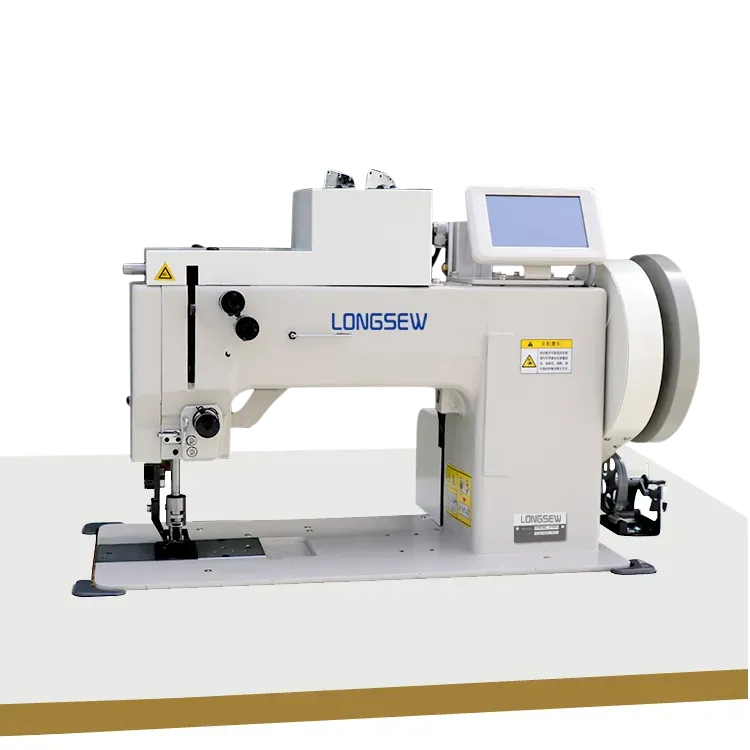Innovative Automated Cutting and Sewing Solutions for Efficient Textile Production
The Evolution and Impact of Automatic Cutting and Sewing Machines
In the fast-paced world of modern manufacturing, the textile industry stands out as a sector that has undergone significant technological transformation over the past few decades. Central to this revolution is the development of automatic cutting and sewing machines, tools that have drastically changed how garments are produced. These machines represent a marriage of engineering prowess and high-tech functionality, enhancing efficiency, precision, and the overall quality of fabric products.
The Genesis of Automatic Machines
The journey of automatic cutting and sewing machines began with the traditional manual methods of garment production. Historically, skilled tailors would cut fabric using hand-held tools, meticulously sewing each piece together. This labor-intensive process was not only time-consuming but also limited the scale of production. As demand for clothing increased, manufacturers sought ways to enhance efficiency. This led to innovations in machinery that would eventually culminate in the introduction of automatic systems.
The first automatic sewing machines were developed in the early 20th century. With advancements in electrical engineering, these machines were able to perform basic stitching tasks at a speed far greater than any human could achieve. Over the years, further enhancements allowed for additional functionalities, such as automated cutting, embroidery, and even pattern recognition.
Benefits of Automatic Cutting and Sewing Machines
1. Increased Efficiency One of the key advantages of automatic cutting and sewing machines is their ability to produce garments at an unprecedented speed. Automated cutting machines can process multiple layers of fabric simultaneously, dramatically reducing the time it takes to prepare fabric for sewing. Similarly, sewing machines equipped with robotics can handle intricate tasks quickly, leading to shorter production cycles.
2. Enhanced Precision With the introduction of computer-aided design (CAD) technologies, automatic machines ensure a level of precision that is challenging to achieve manually. These machines can cut patterns with millimeter accuracy, minimizing waste and ensuring that every piece of fabric is utilized effectively. This precision leads to better-fitting garments and enhances the overall quality of the final product.
automatic cutting and sewing machine

3. Cost-Effectiveness Although the initial investment in automatic cutting and sewing machines can be high, the long-term savings are substantial. With reduced labor costs and less material waste, manufacturers can enjoy higher profit margins. Additionally, these systems require fewer workers on the production floor, allowing companies to allocate resources more strategically.
4. Sustainability In an era where sustainability is a pressing concern, the use of automatic machines plays a significant role in promoting eco-friendly practices within the textile industry. The precision cutting capabilities minimize fabric waste, and the efficient production processes contribute to lower energy consumption.
Challenges and Considerations
Despite the numerous advantages, the transition to automatic cutting and sewing machines is not without its challenges. The initial costs can be prohibitive for small manufacturers, and the technology requires a skilled workforce for operation and maintenance. Furthermore, there is a risk of job displacement for traditional seamstresses and tailors, leading to broader economic implications in regions dependent on textile manufacturing.
Additionally, the reliance on technology raises questions about adaptability. In an industry characterized by rapid trend shifts, the ability to pivot and create custom designs becomes more challenging when automated systems are primarily set for mass production.
The Future of Automatic Cutting and Sewing Machines
As technology continues to evolve, the future of automatic cutting and sewing machines looks promising. Innovations in artificial intelligence and machine learning are set to further enhance the capabilities of these machines, allowing them to adapt to changing demands and create more complex designs with ease. Such advancements will empower the textile industry to be more responsive, creative, and sustainable.
In conclusion, automatic cutting and sewing machines have transformed garment manufacturing, ushering in an era of efficiency and precision. While the shift poses certain challenges, the advantages they offer strongly position them as essential tools in the future of textile production. As the industry continues to evolve, staying ahead of technological advancements will be crucial for manufacturers aiming to thrive in a competitive landscape.
-
Industrial Cylinder Arm Sewing Machine: Revolutionizing Heavy-Duty SewingNewsJul.28,2025
-
Cylinder Arm Sewing Machine: Perfect for Special Sewing ApplicationsNewsJul.28,2025
-
Cylinder Bed Sewing Machine: Essential for Sewing Complex MaterialsNewsJul.28,2025
-
Heavy Duty Sewing Machine: The Essential Tool for Industrial ApplicationsNewsJul.28,2025
-
Computerized Pattern Sewing Machine: Revolutionizing Precision StitchingNewsJul.28,2025
-
Heavy Duty Industrial Sewing Machine: Power Meets PrecisionNewsJul.28,2025
-
Leather Sewing Machine: The Industrial Standard for Tough MaterialsNewsJul.18,2025





























